Art World
How Diego Rivera and Frida Kahlo Turned Their Love Affairs Into an Art Form (and 10 Other Wild Romances That Changed Art History)
Daytime television could learn a thing or two from these epic love sagas.
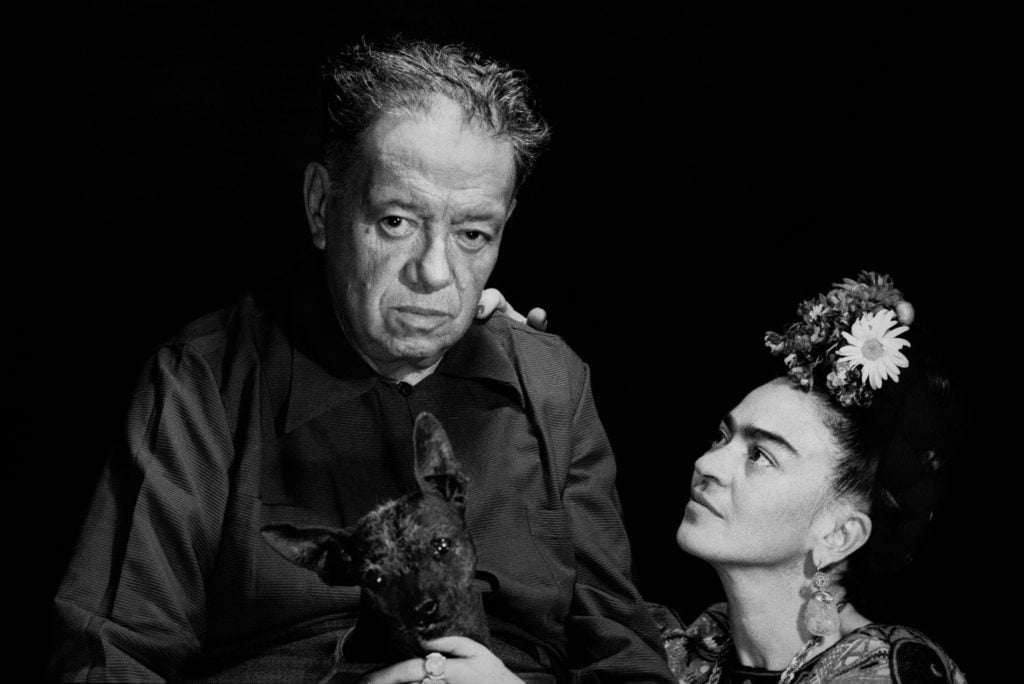
Daytime television could learn a thing or two from these epic love sagas.

Katie White

Muse, lover, rival: when it comes to artists in love, one person has often been all three. And when creative spirits find themselves entangled in messy romances, there’s little predicting what will happen. Sometimes, the meeting of these kindred beings blossoms into long-lasting collaborative bliss. Other times—and perhaps more often—their unions combust in a blaze of drama, jealousy, and infidelity.
With Valentine’s Day on the horizon, here’s a closer look at 11 of the most fascinating art-world romances that changed the course of art history as we know it.
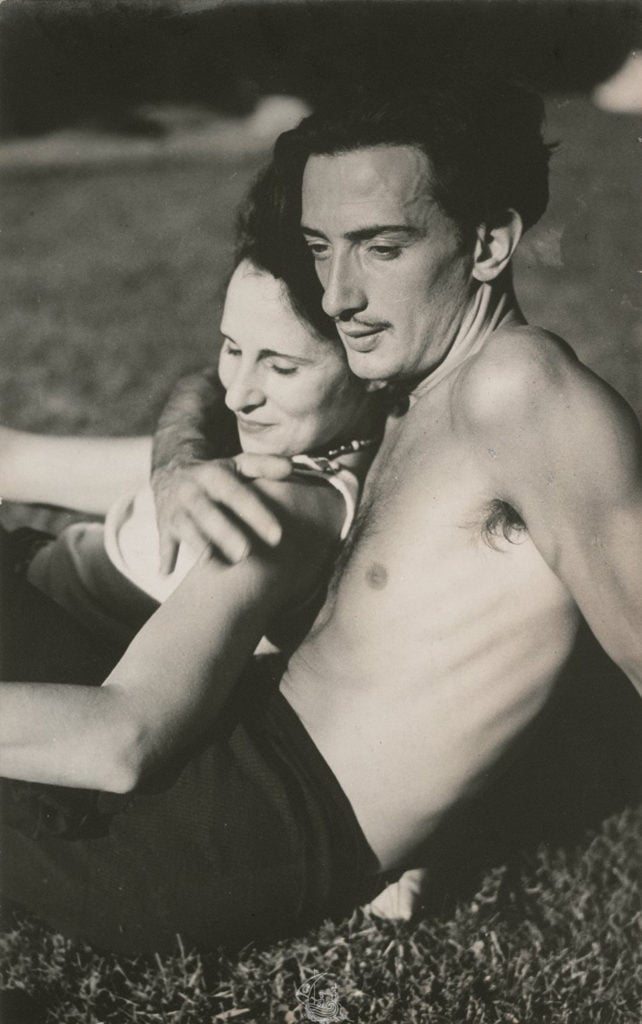
Gala and Salvador Dalí. Courtesy of Fine Art Images/Heritage Images/Getty Images.
Against the Odds: When Gala and Salvador Dalí met in 1929, the pair faced what could have been serious romantic obstacles: Gala was ten years older than the 25-year-old Salvador, and she happened to still be married to the artist and poet Paul Éluard, with whom she had a daughter. None of that deterred the young Dalí, who was wholly captivated by the Russian émigré, later writing, “She was destined to be my Gradiva, the one who moves forward, my victory, my wife.” Dalí’s father, however, was so scandalized by the union that he cut off all contact and financial support when they wed in 1934. But they proved their skeptics wrong, and remained married until Gala’s death in 1982.
Muse & Manager: Their love was both collaborative and unconventional—Gala believed Dalí to be a genius, while he saw her as the fount of all his creative inspiration and energy. She often acted as his muse and model, and was pictured famously as the Virgin Mary in his painting The Madonna of Port Lligat (1949). Though content to play second-fiddle to Dalí’s celebrity, she was also the managerial whiz behind his success, handling his sales, exhibitions, and finances.
Unorthodox Arrangements: Dalí openly acknowledged his fear of intimate relationships. To skirt the issue, the couple had an open marriage, with Dalí regularly encouraging his wife to explore herself outside of their union. However, over the years, the marriage became strained as the artist became increasingly consumed by a fear of abandonment, distraught by the money and time Gala spent on her lovers. The relationship even occasionally devolved into violence on both parts. And though Dalí had grown embittered by his wife over the decades, her death, at the age of 87, ultimately devastated him and he entered a state of isolation that lasted through the remainder of his years.
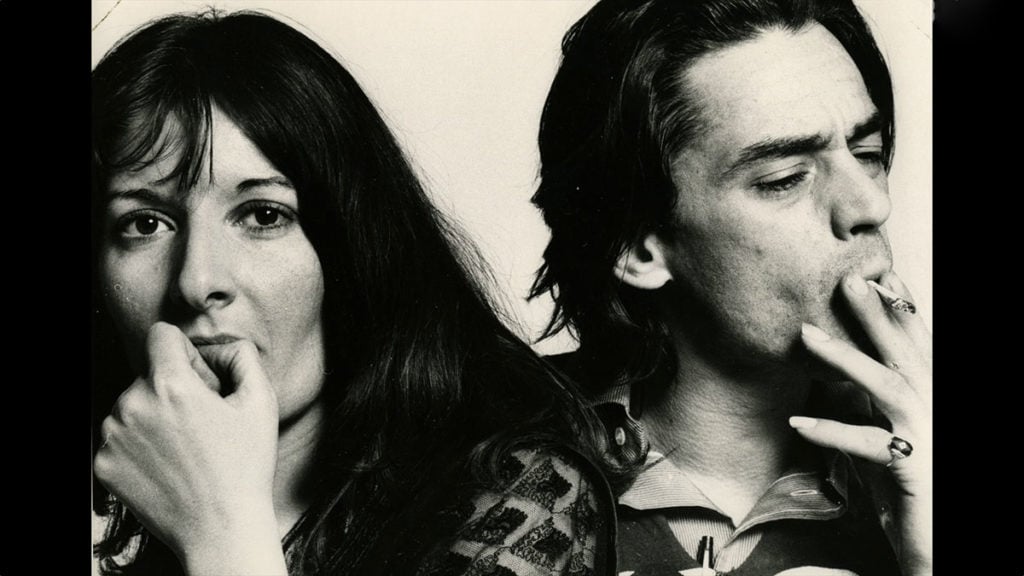
Marina Abramović and Ulay. Courtesy of the Louisiana Channel.
Extreme Intimacy: The Yugoslavian-born performance artist Abramović and the German-born Ulay met in Amsterdam in 1975 and started working together immediately, forming a collective they called “the other.” The pair referred to themselves as a “two-headed body,” who felt as close as twins.
Trust Exercises: Together, the young artists developed a series of hyper-intimate tests of physical endurance and emotional trust. One of the performances, Rest Energy (1980), involved Ulay holding a bow and arrow, which Abramović pulled her weight against. “We actually held an arrow on the weight of our bodies, and the arrow is pointed right into my heart,” she recalled. “It was a performance about complete and total trust.”
Great Wall Goodbye: Though their romance laid the groundwork for the future of performance art, this same ambition ultimately pulled them apart. In Nightsea Crossing—a dual performance in which the artists were meant to sit, staring at one another from across a table—Ulay’s endurance wavered, and during one performance, Abramović continued on her own, facing the empty chair in front of her. The pair split in 1988 and, fittingly, marked the end of their relationship by walking from opposite ends of the Great Wall of China and meeting in the middle.
Public Reunion: The two were reunited after decades during Abramović’s 2012 MoMA retrospective, “The Artist is Present.” There, Ulay (apparently unexpectedly) joined Abramović across a table in a moment reminiscent of Nightsea Crossing and the pair shared an emotional moment that brought both to tears. Nevertheless, the acrimony endured, with Ulay suing his former partner for alleged unpaid royalties and erasing him from formerly co-authored works in the years that followed. Since 2017, the pair, however, have reportedly put the past behind them.
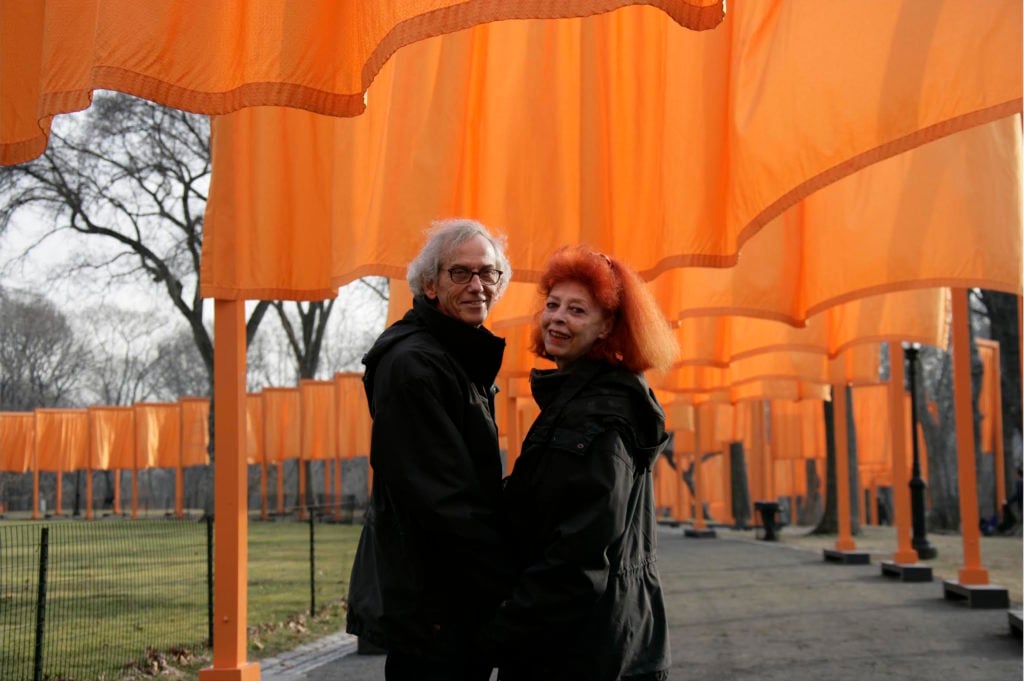
Christo and Jeanne-Claude during The Gates in Central Park, New York (2005). Photo by Wolfgang Volz, ©Christo, 2005.
The French Connection: He was born in Gabrovo, Bulgaria, and she in Casablanca, Morocco, but it was Paris that would bring them together, when, in October 1958, Christo, a refugee living in the city of lights, was hired to paint a portrait of Jeanne-Claude’s mother. Though Jean-Claude was engaged when they met—and even went through with her marriage—she ultimately followed her heart and left her new husband for Christo during her honeymoon.
Gemini Twins: These two artists were born on the same day: June 13, 1935.
Creative Concealment: The husband-and-wife duo became famous for their large-scale environmental artworks of draped fabric, including The Gates in Central Park and the epic 24-mile Running Fence in California. In addition, they swathed architectural icons, like the Reichstag and the Pont-Neuf bridge, in veil-like drapery. Taciturn about interpretation, the couple maintained that the only significance of their creations was visual impact.
Nota Bene: For decades, Christo was the only artist credited for their installations. Then, in 1994, their entire body of work was retroactively credited to “Christo and Jeanne-Claude.”

Robert Rauschenberg and Jasper Johns attend a Larry Rivers gallery opening at the Tibor de Nagy Gallery in New York on December 1, 1958. Courtesy of Fred W. McDarrah/Getty Images.
Downtown Dreamers: Though perhaps the most quintessential New York couple of all, Jasper Johns and Robert Rauschenberg were only together from 1956 to 1961. The pair had studios on different floors of an industrial building on Pearl Street and lived, for a time, on Coenties Slip near the South Street Seaport alongside other artists, including Agnes Martin and Ellsworth Kelly.
Opposites Attract: Rauschenberg was a gregarious, chatty fellow, while Johns was reticent and a little bit removed. Despite their differences, the couple came together to unravel the dominance of Abstract Expressionism: Rauschenberg with his “Combines” and Johns with his “Flags” and “Targets” series, which respectively offered new paths forward from the macho-individualistic aesthetics of the era.
The Green-Eyed Monster: Perhaps more poisonous than romantic jealousy is the professional sort—and this couple was not immune. As history would have it, when renowned gallerist Leo Castelli came to visit Rauschenberg’s studio to plan for a scheduled exhibition, he happened upon Johns’s works while in the building and signed the artist on the spot. Rauschenberg’s show, meanwhile, was postponed indefinitely. The couple’s ensuing breakup was bitter, and the pair didn’t speak for many years after their split.
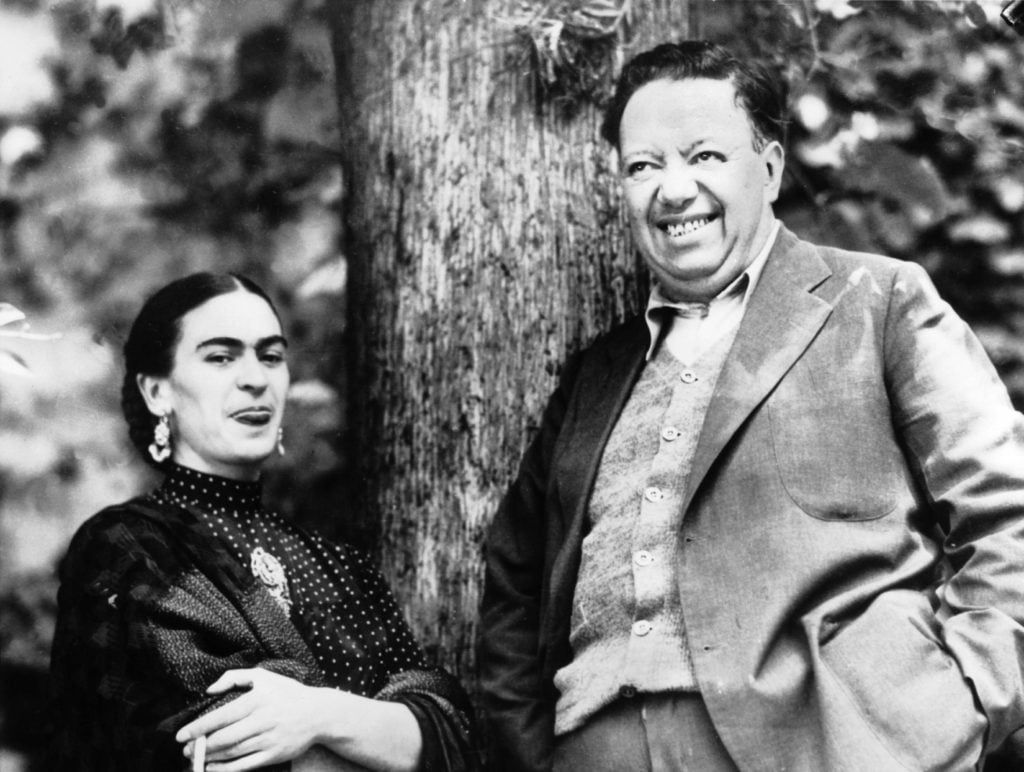
Frida Kahlo and Diego Rivera. Photo by Keystone-France/Gamma-Keystone via Getty Images.
Epic Proportions: We’d be hard pressed to name a greater and more turbulent love affair in art history than that of Frida Kahlo and Diego Rivera. A May–December romance, Kahlo was still an art student when she took up with Rivera, who, at 20 years her senior, was already a giant of Mexican art. Disapproving of the marriage, her parents infamously nicknamed the couple “the elephant and the dove”—a not so subtle jab at the disparity between their sizes.
The Art of Infidelity: Rivera revered Kahlo’s talent, and she his, and their relationship was a whirlwind of creative support and mutual fascination coupled with romantic disloyalty on both parts. The openly bisexual Kahlo enjoyed love affairs with both women and men (including, famously, Trotsky). However, Rivera crossed a line too far when he pursued Kahlo’s younger sister, Cristina, a discovery that absolutely ruined Kahlo.
He Said, She Said: The couple divorced in 1939, but the forces of passion and admiration kept bringing them back to one another, and they remarried the following year. Rivera once referred to Kahlo as “the great fact of my life.” She was not always so certain. Alluding to the streetcar accident that nearly killed her, she said “There have been two great accidents in my life. One was the streetcar, and the other was Diego. Diego was by far the worst.”
Political Passions: In the 25 years they were together until Frida’s death in 1954, at the age of 47, the couple were the faces of socialist activism in Mexico. Nicknamed “a ribbon around a bomb” by André Breton, Kahlo pioneered a new, daring form of self-portraiture, and became the first Latin American woman to have a painting in the Louvre. Rivera, meanwhile, revived the Mayan mural tradition and created a contemporary, wholly Mexican visual language that spoke to the lives and experiences of laborers in his native country.
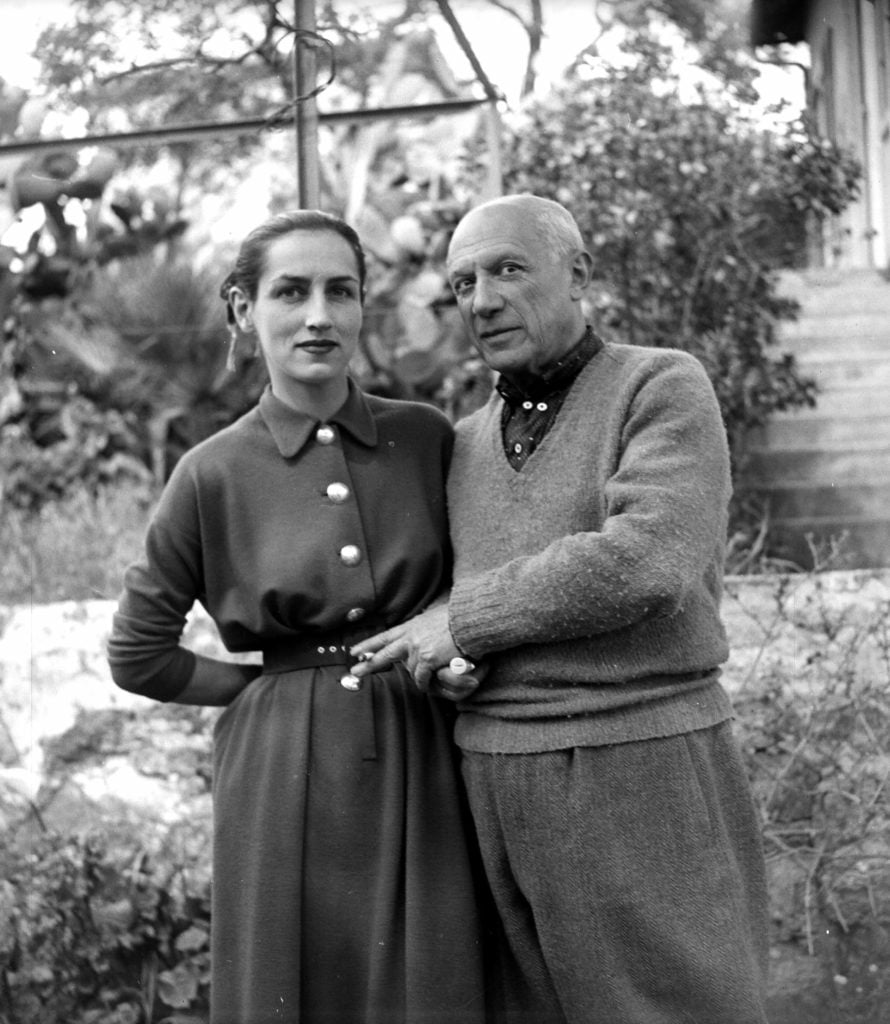
Françoise Gilot and Pablo Picasso, 1952. Photo by Roger Viollet via Getty Images.
Cafe Encounter: In May 1943, the 61-year-old Picasso locked eyes with the 21-year-old Gilot while she was with friends at the Parisian restaurant Le Catalan. Though Picasso was dining with his then lover (the photographer Dora Maar), at the end of the meal, he approached Gilot’s table with a bowl of cherries and an invitation to visit his studio.
Three’s a Trend: Gilot became the object of Picasso’s affections while he was still involved with Maar, whose own intensity had charmed the Spanish artist while he was still living with his young French lover, Marie-Thérèse Walter. (Of course, the 17-year-old Walter had likewise first delighted the artist while he was still amidst the demise of his marriage to the Russian ballerina Olga Khokhlova.) The young Gilot was enraptured by the famed artist, but also cautious of Picasso’s intentions, writing later, “I came onstage with an unavoidably clear vision of three other actresses who had tried to play the same role, all of whom had fallen into the prompter’s box.”
The 10-Year Itch: During their near decade together—and through the births of two children, Claude and Paloma—Gilot supported Picasso as he experimented with sculpture, ceramics, and lithographs, and largely abandoned her own creative ambitions. But by the early 1950s, Gilot had grown weary of her role and decided to walk away from the relationship—a first for the romantically fitful Picasso. An enraged (and ego-bruised) Picasso told Gilot she was heading “straight for the desert” and convinced dealers not to sell her work.
The Parting Shot: Gilot went on to marry Jonas Salk—yes, the genius who developed the polio vaccine. Then, in 1964, Gilot published Life With Picasso, a particularly revealing memoir of her life with the artistic genius, filled with occasionally unflattering details. As retaliation, Picasso cut off all contact with their two children.
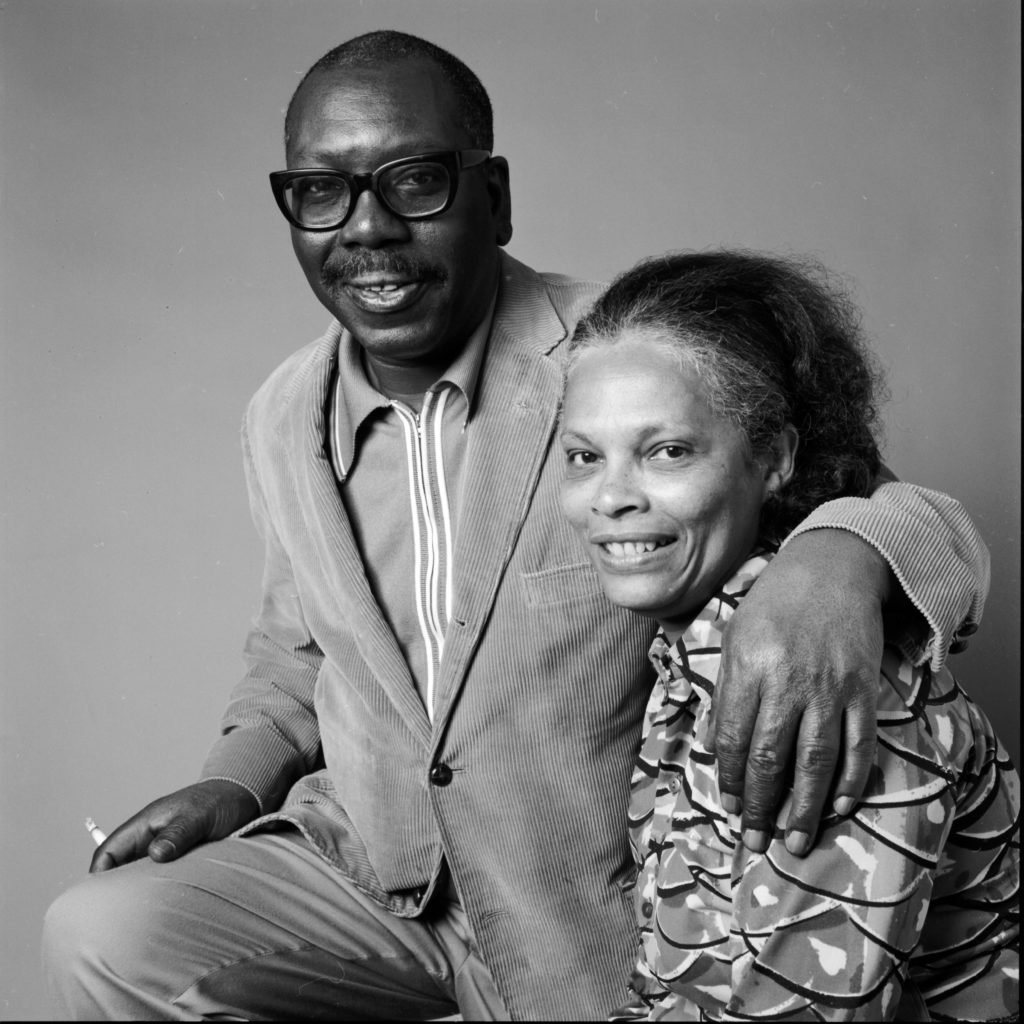
Jacob Lawrence and Gwendolyn Knight, New York, 1974. Courtesy of Anthony Barboza/Getty Images.
Art-School Sweethearts: Both were students of influential teacher and godmother of the Harlem Renaissance, Augusta Savage, while she was teaching at the Harlem Community Art Center.
Different Pasts, Shared Visions: The Atlantic City-born Lawrence and the Barbadian Knight wed in 1941 and remained together until Lawrence’s death in 2000. Lawrence was a complex fellow, having moved frequently with his mother and siblings as a child, spending time in foster care, and serving in the military, which was followed by in-patient mental-health treatment. But he painted and drew resolutely through his upheavals. A sense of community drew Lawrence and Knight together, and both worked as members of the Works Progress Administration. During those years, Lawrence developed his style of “dynamic cubism,” which was deeply influenced by the shapes, sounds, and minds of Harlem. The WPA years culminated with Lawrence’s 1941 “Migration Series,” which focused on Black American migration from the rural South to the industrial North.
Her Time to Shine: The couple relocated to the Pacific Northwest in 1970, where Knight began to paint in earnest, often creating intimate portraits of friends. She received her first solo museum exhibition in 2003 at the Tacoma Museum of Art. Besides her artistic career, Knight was also an active philanthropist who worked tirelessly to support children’s causes.

Elaine and Bill de Kooning, 1953. Courtesy of Bridgeman Images.
The Stowaway and the Student: The Holland-born Willem de Kooning snuck into the United States as a stowaway on the British Freight headed for Argentina and immediately immersed himself in the art world. His life would change forever when, in 1938, a student named Elaine Fried would enroll in his drawing class. The work-obsessed and reticent Willem was seemingly immediately dazzled by the magnetically charming woman who would later become his wife.
Turbulent Times: The de Koonings married in 1943, but there was no honeymoon period, as the marriage was plagued by the effects of alcoholism, poverty, mutual ambition, and a seemingly unending string of affairs from the start. And yet their mutual artistic admiration never waned. Elaine was convinced of her husband’s brilliance as he pioneered Abstract Expressionism, and she created her own distinct form of abstracted figuration. Interestingly, too—and interpret this however you wish—Elaine’s long list of daliances often involved men who ultimately helped her husband’s career, including the art critic Harold Rosenberg and the curator and editor Thomas B. Hess.
Ahead of Her Time: Perhaps Elaine was born a generation too early, as the resolute artist refused keep house at the expense of her art making, valuing her own career as equal to her husband’s. She also had an eye for style, and though the couple were known to live on coffee, she always managed to keep up with the latest fashions.
Together Again: Though the couple separated in the late 1950s, they reconciled in 1976, and Elaine left a lucrative teaching position to buy a property nearby to his in Long Island. She ultimately assumed management of his studio.
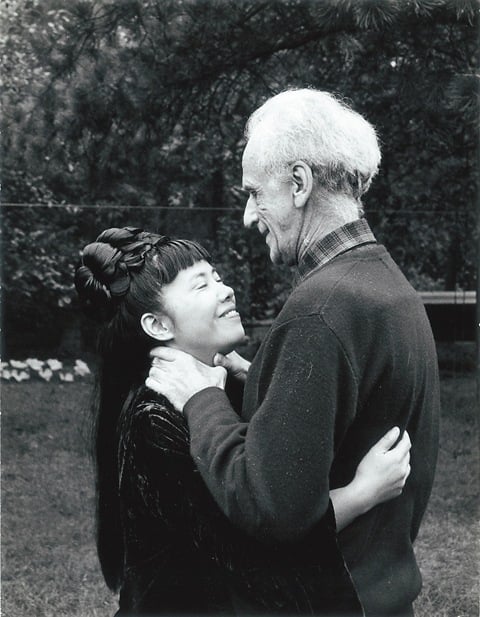
Yayoi Kusama with Joseph Cornell in New York (1970). Courtesy Yayoi Kusama Studio, Inc.
Are They, Or Aren’t They?: Though Yayoi Kusama may espouse the language of free love, she’s historically been rather tight-lipped about her own romances. The Japanese artist moved to New York in the late 1950s and soon after befriended Donald Judd, who was also just starting out in his career. The soon-to-be father of Minimalism reviewed her first solo show positively in 1959, even buying one of her paintings. Soon the two were living and working on different floors of the same 19th Street building. Kusama called Judd “an early boyfriend,” but the pair were destined for friendship. Instead, it was her intense, though arguably platonic relationship with the master-of-assemblage Joseph Cornell that dominated much of her New York life.
Odd Couple: Kusama was in her 30s when she met the idiosyncratic Cornell, who was 26 years her senior. Their unusual relationship lasted for years, with Kusama regularly visiting Cornell at his mother’s home on Utopia Parkway in Queens, where he lived and worked. Though their romantic interludes may or may not have been physical, the two were deeply emotionally enmeshed. Cornell would call her innumerable times a day, pen her long letters, and when she had no money, gift her works of his to sell.
A Disapproving Mother: Though we may never know her side of the story, Cornell’s mother was rumored to be controlling and overbearing. Vexed by her son’s intimacy with the younger Kusama, she supposedly once poured a bucket of water over the two artists while they sat kissing in her backyard.
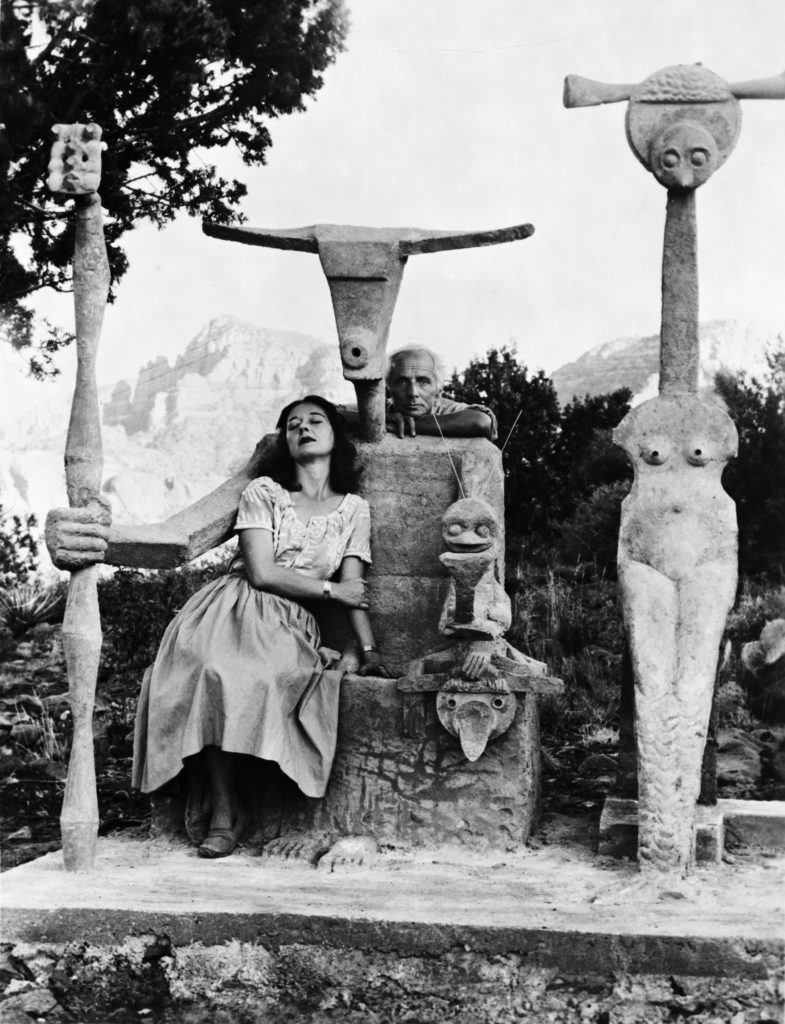
Dorothea Tanning and Max Ernst with his sculpture, Capricorn (1947). © John Kasnetsis.
Checkmate: Ernst and Tanning first met when he visited her studio at the behest of his then wife, Peggy Guggenheim, who was interested in Tanning’s Surrealist-inspired paintings. With a shared passion for chess, Ernst and Tanning sat down to play a few matches. We don’t know what transpired exactly, but, a week later, Ernst moved in with Tanning.
Take Two: Tanning and Ernst were married in Hollywood in a joint ceremony with their friends, the artist Man Ray and dancer Juliet Browner.
Scorecard: Tanning and Ernst were married from 1946 until Ernst’s death in 1976. It was Tanning’s only marriage and Ernst’s third, excepting his long relationship with the Surrealist Leonora Carrington.
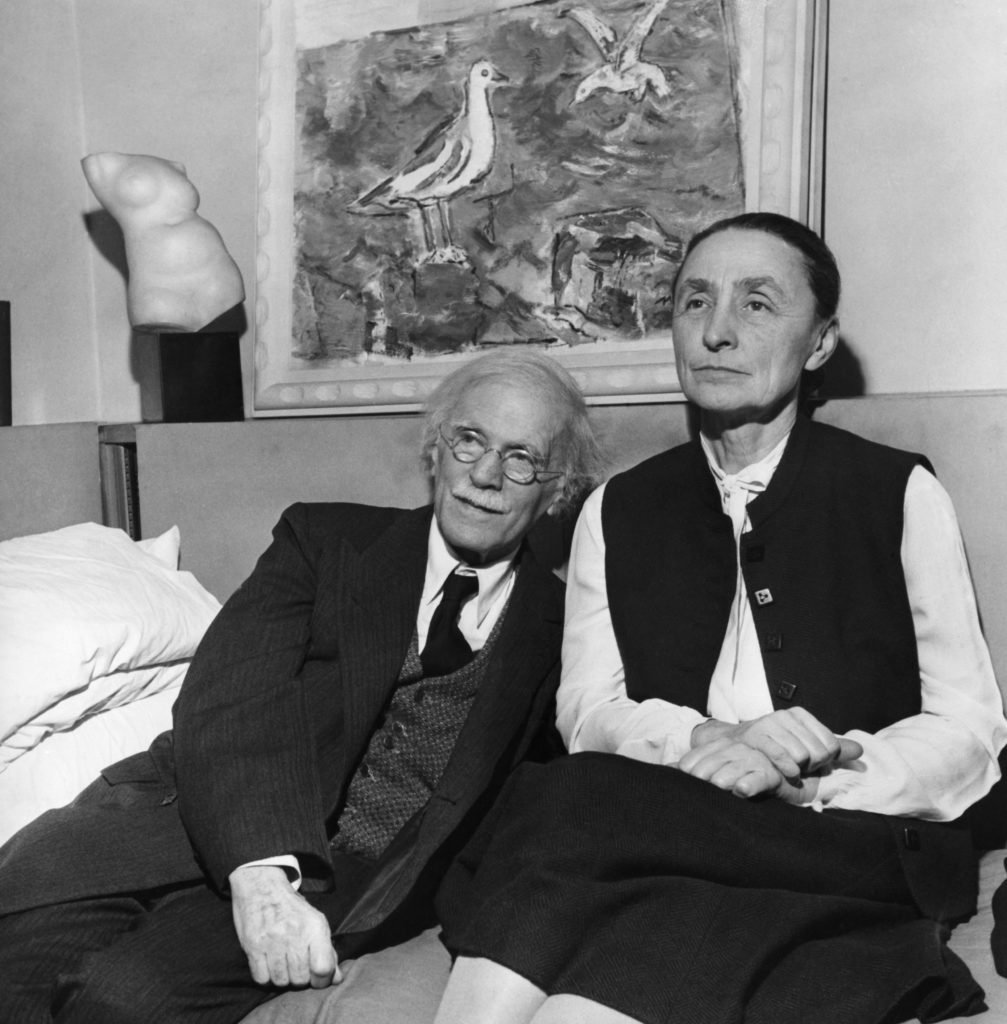
Georgia O’Keeffe pictured with her husband, Alfred Stieglitz. Courtesy of Getty Images.
American Modern Love: Famed photographer Alfred Stieglitz and pioneering American painter Georgia O’Keeffe were married from 1924 until his death in 1946. He was older, a photographer, a New Yorker, and his gallery, 291, was at the center of the push towards Modernism.
Complex entanglements: Stieglitz was a womanizer with a fondness for younger women, but also an advocate of promising women artists. O’Keeffe and Stieglitz shared a profound intellectual and creative respect for one another, though their marriage was the definition of tumultuous, with O’Keeffe and Stieglitz living separately for a great deal of the marriage.
Love letters: In 2011, My Faraway One, a volume of correspondence between the couple, was published and revealed the immense struggle, respect, and complexity within their marriage. Some of the details were perhaps too intimate for outside eyes, however, including Stieglitz’s many references to their life behind closed doors.